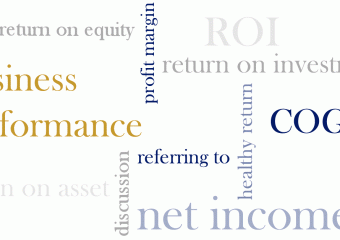Finance and Accounting: An Introduction
Finance and accounting play a significant role in keeping businesses alive. A business needs to gather sums of money (not enough to be invested individually) large enough to run a business with the goal of gaining a profit. Simply put, people who have saved some money, invest it in a business. The business may be run by them or it may be handled by managers and staff employed outside of the people who initially invested in it. If the operations are the heart of the business, financial management is the mind. Accounting and financial management follow a fundamental rule.
A business uses investments to buy equipment, raw material, and other facilities required for the business activities. It hires the human resources it needs, and runs its operations in a way that they lead to a profit at the end of every fiscal year. Shareholders (people who have invested in the business) hope to earn more profit every year, so it is crucial for business to run their operations effectively. This seems to be a rational and an obvious point. However, there are times when businesses fail to reach profitability. Factors affecting the profitability of a business may be external or internal.
The Fundamental Rule
Since we are speaking in terms of the financial aspects of a business, the balance sheet equation helps clarify some points:
Assets=Liabilities + Owner’s Equity

Owner’s Equity
For a business to run, it needs money, equipment, and people. The money comes from people who are willing to invest in the company. Therefore, what the business owns belongs to the investors. These investors will be known as shareholders of the company based on their investment proportion and the total sum of this investment will be known as the owner’s equity. Shareholders expect to earn profits from their investments. From the business viewpoint, this money is known as the company capital.
Assets
The capital is used to buy equipment and raw material. The business also uses assets to manage business activities. Cash, buildings and lands, investments, and brands are examples of assets. The resources are clearly finite. Thus, effective management is crucial to turning a business to a profitable and a sustainable one. Everything a business owns becomes its assets, what is has at its disposal to reach profitability. Misuse of the assets, however, could lead to loss. Finance and accounting make sure the company knows its balance of assets and debts. And they provide an overall view of the business status, so that managers and investors can make informed decisions.
Liabilities
Every business operation involves money circulation between the company and other businesses or people. A business holds an account that records its debts. These debts are known as liabilities. They indicate the expenses of the business. Since debts have to be eventually paid back – in short or long term – it could pose a threat to a company if the total sum of the debt is larger than its earning. More importantly, if liabilities become equal to or greater than the owner’s equity, it can be officially declared bankrupt. Again, this shows how important it is to manage resources effectively.
Understanding how finances are utilized is central to business management. Funds are the main resources of every business activity. They should be utilized wisely, so that the business can experience sustainable growth. Optimized financial management improves final outcomes. Without financing, there can be no business.





